|
|
|
Warrens
of Whitechurch |
|
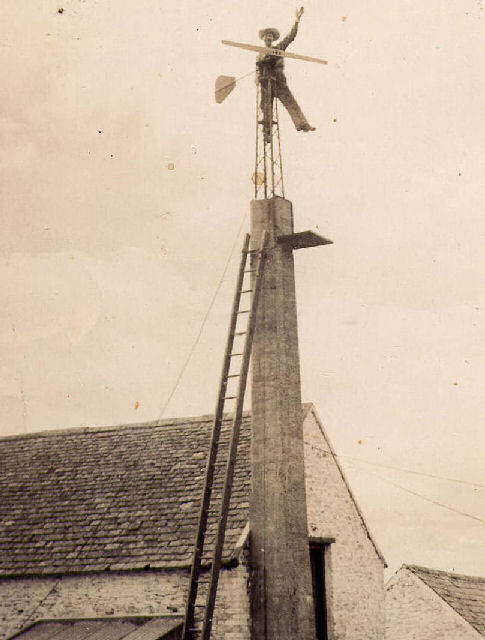
|
|
Sam Warren on the windcharger. |
|
This unusual photo
shows Sam Warren on top of the windcharger. The
Warrens
were away ahead of their time in generating their own
electricity. It was built by Sam himself but neither the
tower nor windcharger are still there. |
The Warren family of Whitechurch was a very hard
working and enterprising family and gave much needed
employment to the locals. They were involved in many
enterprises especially in the early to mid 1900's.
One of their main enterprises was the 'Piltown Bacon
Company'. This company
was bought from the Glascott
family in Piltown who were landlords of Whitechurch.
Two workmen and a butcher moved to the Warren Farm and
Mary and Katie McDonald began working here also at this
time. The pigs were reared, slaughtered, cleaned cut up
and prepared to be sold. The bacon was cured in a large
vat and then hung from large hooks in the beams of the
'Bacon House'.
The bacon was then loaded into their own
van and sold to the local houses and shops.
Sausages and puddings were also made here. The left
overs from the pigs were
minced and mixed with 'rough
meal'. which was brought down from Dublin. Spices were
then added. The skins for the sausages were made
from the intestines of sheep which were collected from
the local area on the van run. The puddings were made in
a similar way.
|
|
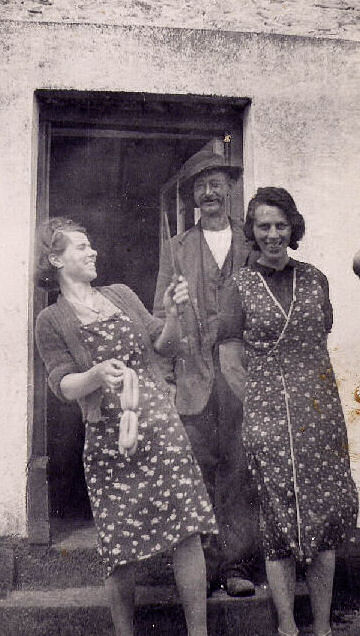
|
|
Maggie
Dake, Willie Dwyer and Katie McDonald outside the
'Sausage House'. |
|
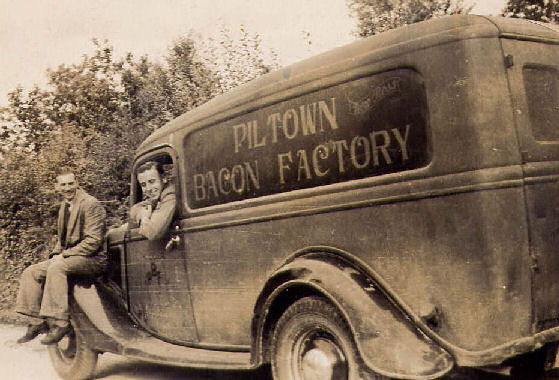
|
|
Sam is sitting on the wing of the van which was used in
the 30's and 40's.
|
Candles were another product from the pig. These
were made from pig fat (tallow) which was poured into
moulds with wicks supplied by 'Irish Ropes'. The candles
were also sold on the van round. A common problem with
the candles was that cats loved the smell and taste of
the pig's fat and would often run away with candles. Up
to twelve women were involved in the candle making and
the sausage business.
Sweets were also made here. First of all sugar was
boiled until a certain texture was reached. The
temperature could be as high as 140 °C.
They made boiled sweets,'rock' and 'peggy's leg'. They
also imported boiled sweets from Czechoslovakia which
were brought in at Dungarvan and collected in the van.
The sweets were sold in the van with the meat and
candles. |
|
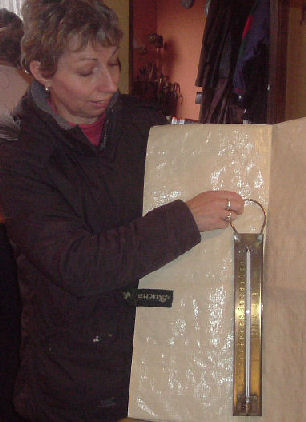
|
|
Patricia Knight shows the thermometer used in the making
of the boiled sweets.
|
With the coming of World War 2 in 1939 there was a great
shortage of tea. Sam Warren and Nellie Doyle were
delivering their produce in Taghmon one evening when they
stopped for dinner. They were given tea with their meal
and then asked for the recipe. Back at Whitechurch they
started to experiment that night. The tea was made from
carrots minced in the sausage machine which was then put
into 44 gallon drums and roasted over a saw-dust fire. The
tea was then put into brown bags which were easily found
then and were labelled and then sold.. The tea experiment
proved a great success.
At its peak some 20 people were employed on the farm just
for the 'Piltown Bacon Company' work.
After the war new laws were brought in regarding slaughter
houses and the meat business changed. Pigs were still bred
on the farm but the Piltown Bacon Company became a
confectionery business with Sam and Nellie working into
old age.
|

Tub Trap and
on right is a hubcap which was used on the traps. These
cost £42.10
|
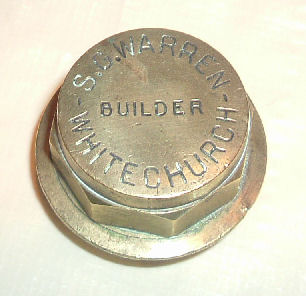
|
|
The Warrens were also involved in coach
building and making farm trailers.
They also had their own forge.
|
|
|
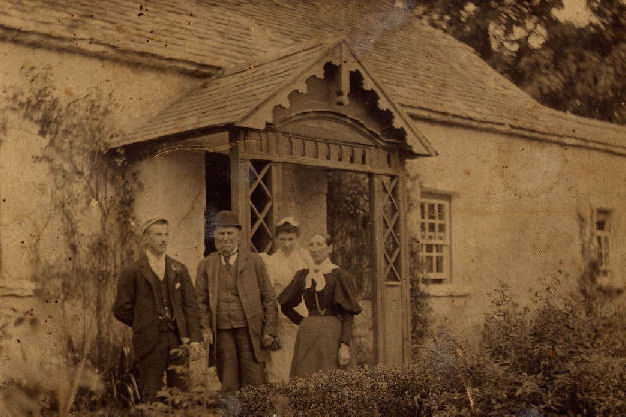
|
|
This
photo is from 1898 and shows-from left- Samuel George
Warren,
Samuel Warren, Wilhemina Warren and Mrs. Dunne in the background. This is the
original Warren house in Whitechurch.
|
|
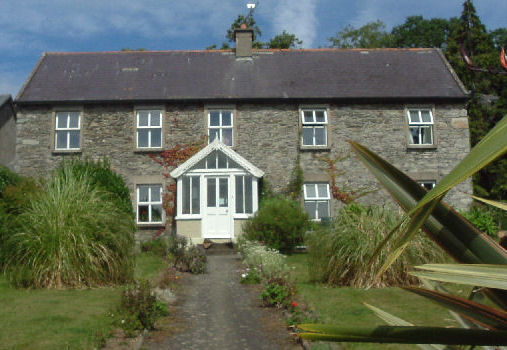
|
This is the house today.
Roger and Patricia Knight (nee Warren) carry on a thriving
self catering business called Warren Farm Guest
Cottages. There are five cottages in all to choose
from.
www.warrenfarmireland.com
|
I wish to thank Patricia Knight
most sincerely for allowing me take photos and giving me
every assistance.
Please note that the house is a private residence.
Seán Crowley |
|
Please
Return to Local History |

